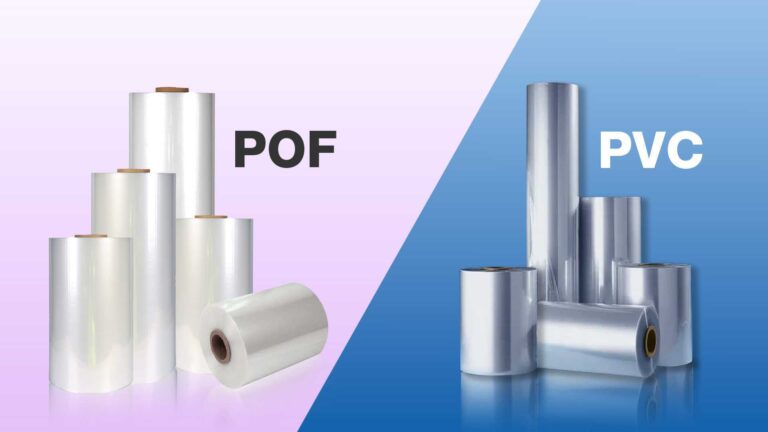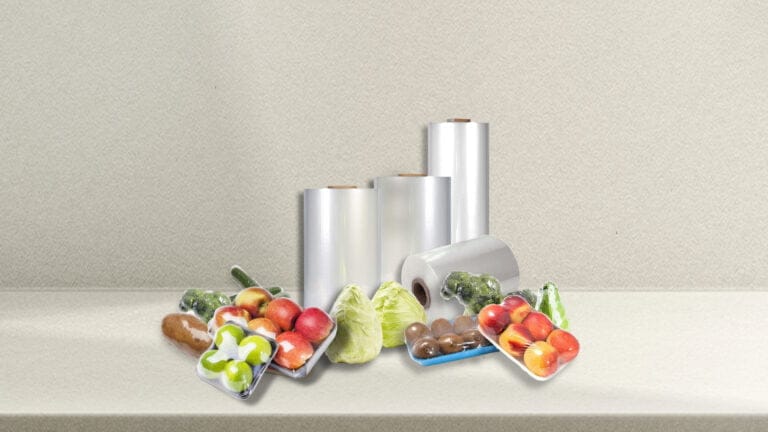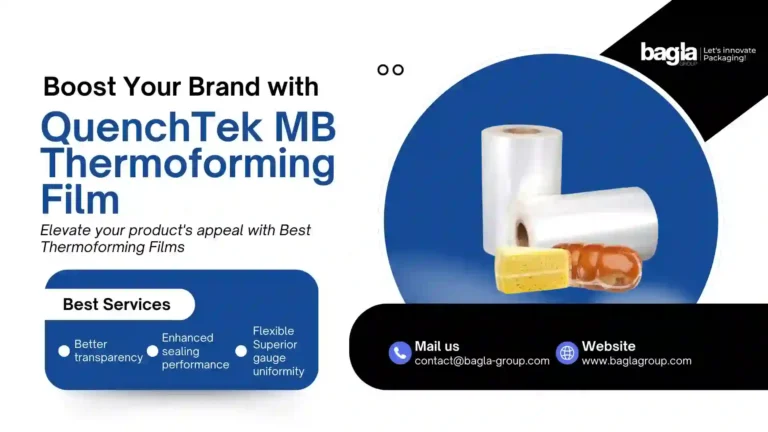When choosing the right packaging products for logistics purposes, strapping tape is one of the most underrated heroes. It is one of the reliable tapes that holds the entire operation together literally. You can simply utilize these tapes for bundling metal rods, securing cartons, or stabilizing pallets. During transit and storage, strapping tape plays a crucial role in ensuring everything stays in place.
But what exactly is strapping tape? How is it different from regular packing tape or filament tape? And most importantly, how do you choose the right one?
Let’s break it all down.
What is Strapping Tape?
Strapping tape is a high-strength, pressure-sensitive adhesive tape. The tape is primarily used for bundling, palletizing, reinforcing, and untizing heavy loads. It can often be reinforced with fiberglass, polyester, or polypropylene filaments. This will give an exceptional tensile strength and load-bearing capacity.
Strapping Tape is the go-to packaging solution for heavy-duty applications. It is one of the best alternatives of traditional tapes.
Unlike common brown packing tape, strapping tape is built for endurance, making it a top choice for industrial, e-commerce, and export packaging.
Why is Strapping Tape So Important?
If you’re searching for “what is strapping tape used for” or “is strapping tape strong,” you’re not alone. Businesses across sectors rely on it for
- Heavy load security
- Safe transportation
- Carton reinforcement
- Product bundling
- Pallet stabilization
Its reliability comes from a unique construction, strong synthetic or fiberglass filaments embedded within the tape that resist snapping, stretching, and tearing.
Types of Strapping Tape (and Which One to Use)
Depending on the weight, handling, and surface type of your shipment, strapping tape is available in various options. Here are the most popular ones
- Mono-Filament Strapping Tape – The mono-filament tape reinforced with fibers in one direction (lengthwise). It is highly suitable for light bundling, wires, tubes, and rods.
- Cross-Filament Strapping Tape – This tape can be reinforced in both lengthwise and crosswise directions. It offers superior strength for palletizing, carton sealing, and heavy bundling.
- Polyester (PET) Strapping Tape – It is a high-strength and durable option for buyers. One of the ideal choices for export packaging and long-distance transportation.
- Polypropylene (PP) Strapping Tape – One of the finest choices for lightweight and cost-effective buyers. For the medium-duty packaging, it is a great choice.
- Custom-Printed Strapping Tape – Custom-printed strapping tapes are used to display branding, warning, or tamper-evident messages. Most of the time, it is an ideal choice for e-commerce and retail.
Common Uses of Strapping Tape
You’ve probably seen strapping tape in action without realizing it. Here’s where it’s typically used
- Palletizing – Secures stacked cartons on pallets to avoid shifting or collapse during transport.
- Carton Reinforcement – Prevents bulging or bursting of boxes containing heavy items.
- Product Bundling – Holds multiple items (like pipes or rods) together as a unit.
- Export Packaging – Essential for international shipping, especially in high-vibration or moisture-prone environments.
- Temporary Holding – Used on production lines to hold machinery parts or unfinished assemblies in place.
Strapping Tape vs. Filament Tape: What’s the Difference?
This is one of the most common Google searches around this topic to understand the difference between Strapping tapes vs filament tapes. While the two are closely related and often overlap, here’s a quick comparison
| Feature | Strapping Tape | Filament Tape |
| Reinforcement | May or may not include filaments | Always includes fiberglass filaments |
| Strength | High | Very high, especially cross-filament |
| Cost | Moderate | Slightly higher due to added reinforcement |
| Use Case | Bundling, sealing, reinforcing | Extreme loads, heavy-duty pallet securing |
Bottom Line If you’re shipping heavy or high-value items, opt for cross-filament tape. For general load securing, mono-filament or PP strapping tape will do the job.
Industries That Use Strapping Tape
Strapping tape is used widely across several sectors for one simple reason—it works. Here’s how different industries use it
| Industry | Application |
| Logistics & Freight | Pallet securing, container loading, and unitizing boxes |
| E-commerce | Carton closure, returns packaging, and tamper-proof sealing |
| Manufacturing | Flat-pack unit bundling, furniture legs ,or boards packaging |
| Furniture & Home Goods | Flat-pack unit bundling, furniture legs or boards packaging |
| Retail & Distribution | Shelf stocking, stock movement, and inventory handling |
How to Use Strapping Tape the Right Way?
Here’s a step-by-step guide for using strapping tape effectively
- Clean the Surface – Must clean the surface because dust or oil can reduce adhesion.
- Wrap Firmly – Apply tape around the object or box with slight tension.
- Overlap Edges – For better holding, overlap tape by a few inches.
- Apply Pressure – Press down with your hand or roller to ensure full adhesion.
- Use a Tape Dispenser (Optional – Makes application faster and safer.
Pro Tip: For best results, store strapping tape in a dry, room-temperature place.
How to Choose the Best Strapping Tape for Your Needs?
Not all strapping tapes are created equal. Choosing the right one depends on
- Load weight – Heavier loads need stronger, cross-filament tape.
- Shipping route – Long-distance and bumpy routes need PET-based reinforcement.
- Environmental conditions – Humidity or extreme temperature? Go for moisture-resistant tape.
- Branding – Want to print logos or messages? Choose custom-printed strapping tape.
- Reusability – For temporary applications, go with clean-removal options.
If you are having any doubts, then you can connect with the Bagla Group, a packaging product industry leader.
Where Can You Buy Strapping Tape in India?
If you are looking for a hassle-free purchase of strapping tape, then Bagla Group is a trusted name in packaging innovation. The team will guide you and help you to find the best tape that you need.
Benefits of Using Strapping Tape
Here are the advantages of strapping tape if you choose this as your packaging product hero:
- Superior Load Strength – Prevents shifting, damage, or spillage.
- Fast Application – No machines or clips required.
- Clean Finish – No mess, no residue (in good-quality tapes).
- Cost-Efficient – Cheaper than steel or plastic strapping tools.
- Safe to Use – No sharp edges or risk of injury.
- Eco-Friendly Options – PET and PP tapes can be recycled.
Final Thoughts
This strapping tape looks like a simple tool, but it has a huge impact on packaging, logistics, and operations. When you use this strapping tape then you can ensure the consumer about your shipments, reduce losses, and speed up handling. It is one of the reliable, affordable, and easy-to-use options for you.
So, this tape is a suitable choice for the e-commerce seller, manufacturing unit, or logistics partner. Investing in the right Strapping Tape can improve your packaging process dramatically.
Is Strapping Tape Waterproof?
Strapping tape is generally moisture-resistant, especially PET-based variants. However, it’s not fully waterproof. For wet or outdoor environments, opt for weatherproof cross-filament tapes.
Can I Use Strapping Tape for Moving?
Absolutely. Strapping tape is ideal for securing boxes, furniture parts, and bundled items during house or office moves.
Does Strapping Tape Leave Residue?
Good-quality strapping tapes are designed for clean removal, especially if used within a few weeks. Avoid budget versions that may leave adhesive behind.
Can Strapping Tape Be Recycled?
Yes, PET and PP backing tapes can be recycled in most areas. However, always verify local recycling rules.
What Weight Can Strapping Tape Hold?
Heavy-duty filament-reinforced strapping tapes can typically handle 100–300 lbs per inch of tape width, depending on the specific type.



